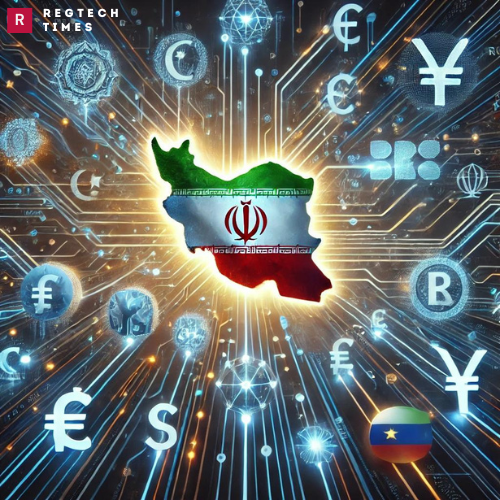In an era where global financial dynamics are rapidly shifting, Iran is taking decisive steps to mitigate the impact of U.S. sanctions by developing independent payment systems with Muslim-majority nations and key international partners. These initiatives aim to reduce reliance on U.S. dollar-based transactions, fostering financial sovereignty and ensuring uninterrupted trade despite geopolitical challenges.
The Impact of U.S. Sanctions on Iran’s Economy
For years, Iran has been under stringent economic sanctions imposed primarily by the United States. These sanctions target critical sectors such as oil, finance, and international trade, severely restricting Iran’s access to global financial markets. A significant consequence of these sanctions is the limitation on Iran’s ability to engage in dollar-denominated transactions, which are central to international trade. The exclusion from prominent payment systems like SWIFT (Society for Worldwide Interbank Financial Telecommunication) has hampered Iran’s ability to conduct cross-border transactions, exacerbating economic difficulties.
Iran’s Response: Building Independent Payment Systems
In response to these challenges, Iran is proactively developing independent payment systems that facilitate trade using national currencies. This strategic pivot aims to create a robust financial infrastructure that can operate independently of the U.S. dollar-centric global financial system. By establishing such payment systems, Iran seeks to enhance its economic resilience and maintain vital trade relationships despite external pressures.
At the recent Organization of Islamic Cooperation (OIC) summit in Istanbul, Iran’s Central Bank Governor, Mohammad Reza Farzin, emphasized the importance of creating bilateral and multilateral payment systems with other OIC member nations. “This issue has never been raised at a multilateral level … we are seeking to have it implemented with member countries of the OIC,” Farzin stated. This initiative is designed to replicate the success Iran has achieved with BRICS (Brazil, Russia, India, China, and South Africa) countries, thereby expanding its network of independent payment systems across the Islamic world.
Collaboration with BRICS: A Proven Model
Iran’s collaboration with BRICS nations has already demonstrated the effectiveness of independent payment systems. Notably, Iran and Russia have integrated their national payment systems—the Russian Mir and Iranian Shetab systems—enabling transactions in their local currencies. This integration allows both countries to bypass U.S. sanctions, ensuring seamless trade and investment without relying on dollar-based platforms.
Iran’s APT-42 Hit with US Sanctions for Meddling with Trump’s Election Campaign
Furthermore, discussions at the BRICS summit have introduced the concept of “BRICS Pay,” a unified payment system supported by cloud technology and digital wallets. This proposed system aims to facilitate trade among BRICS member countries independently of Western financial oversight, promoting greater financial independence and resilience within the bloc.
Expanding Payment Systems within the OIC
Building on its success with BRICS, Iran is now extending its efforts to the broader OIC membership, which includes 57 member countries. The objective is to establish a network of payment systems that utilize national currencies, thereby reducing dependence on the U.S. dollar and mitigating the effects of sanctions. Iran’s non-oil trade with OIC members has already seen significant growth, increasing by 14% in the first half of the year to reach $32.2 billion. This growth highlights the potential of independent payment systems to enhance economic cooperation and trade within the Islamic world.
Implications for the Global Financial System
Iran’s push to develop independent payment systems signifies a broader challenge to the existing global financial order dominated by the U.S. dollar. The dominance of the dollar has long provided the United States with considerable geopolitical leverage. However, initiatives like Iran’s aim to create a multipolar financial system where multiple currencies play significant roles in international trade. This shift could weaken the dollar’s dominance, offering developing economies greater autonomy in their economic dealings.
Additionally, the adoption of digital and cloud-based payment systems positions participating countries at the forefront of financial innovation. These technologies offer more secure, efficient, and resilient transaction methods, further enhancing the appeal of independent payment systems.
Strengthening Economic Sovereignty and Resilience
By establishing independent payment systems, Iran and its partners are not only circumventing sanctions but also laying the groundwork for sustained economic sovereignty. These systems provide a buffer against external economic pressures, ensuring that member countries can continue to engage in international trade without being hindered by political or economic sanctions. This strategy fosters greater economic resilience, allowing countries to maintain stable and reliable trade relationships even in the face of geopolitical tensions.
Iran’s initiative to develop independent payment systems with Muslim nations and BRICS members is a strategic response to the constraints imposed by U.S. sanctions. By focusing on national currencies and creating robust financial infrastructures, Iran is enhancing its economic sovereignty and resilience. These efforts could lead to significant shifts in the global financial landscape, promoting a more diversified and multipolar system where multiple currencies and independent payment systems coexist, reducing the dominance of the U.S. dollar and empowering developing economies to navigate their economic futures with greater autonomy.


